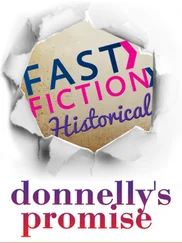Ignatius Donnelly - Antediluvian world
Здесь есть возможность читать онлайн «Ignatius Donnelly - Antediluvian world» весь текст электронной книги совершенно бесплатно (целиком полную версию без сокращений). В некоторых случаях можно слушать аудио, скачать через торрент в формате fb2 и присутствует краткое содержание. Жанр: Старинная литература, на русском языке. Описание произведения, (предисловие) а так же отзывы посетителей доступны на портале библиотеки ЛибКат.
- Название:Antediluvian world
- Автор:
- Жанр:
- Год:неизвестен
- ISBN:нет данных
- Рейтинг книги:5 / 5. Голосов: 1
-
Избранное:Добавить в избранное
- Отзывы:
-
Ваша оценка:
- 100
- 1
- 2
- 3
- 4
- 5
Antediluvian world: краткое содержание, описание и аннотация
Предлагаем к чтению аннотацию, описание, краткое содержание или предисловие (зависит от того, что написал сам автор книги «Antediluvian world»). Если вы не нашли необходимую информацию о книге — напишите в комментариях, мы постараемся отыскать её.
Antediluvian world — читать онлайн бесплатно полную книгу (весь текст) целиком
Ниже представлен текст книги, разбитый по страницам. Система сохранения места последней прочитанной страницы, позволяет с удобством читать онлайн бесплатно книгу «Antediluvian world», без необходимости каждый раз заново искать на чём Вы остановились. Поставьте закладку, и сможете в любой момент перейти на страницу, на которой закончили чтение.
Интервал:
Закладка:
1873, p. 387) supposes that the curious so-called “Garden Beds” of Michigan were the fields from which they drew their supplies of food. He adds,
“The discoveries in Isle Royale throw a new light on the character of the ‘Mound Builders,’ giving us a totally distinct conception of them, and dignifying them with something of the prowess and spirit of adventure which we associate with the higher races. The copper, the result of their mining, to be available, must, in all probability, have been conveyed in vessels, great or small, across a treacherous and stormy sea, whose dangers are formidable to us now, being dreaded even by our largest craft, and often proving their destruction. Leaving their homes, those men dared to face the unknown, to brave the hardships and perils of the deep and of the wilderness, actuated by an ambition which we to-day would not be ashamed to acknowledge.”
Such vast works in so remote a land must have been inspired by the commercial necessities of some great civilization; and why not by that ancient and mighty people who covered Europe, Asia, and Africa with their manufactures of bronze-and who possessed, as Plato tells us, enormous fleets trading to all parts of the inhabited world-whose cities roared with the continual tumult of traffic, whose dominion extended to Italy and Egypt, and who held parts of “the great opposite continent” of America under their control? A continuous water-way led, from the island of Atlantis to the Gulf of Mexico, and thence up the Mississippi River and its tributaries almost to these very mines of Lake Superior.
Arthur Mitchell says (“The Past in the Present,” p. 132), “The discovery of bronze, and the knowledge of how to make it, may, as a mere intellectual effort, be regarded as rather above than below the effort which is involved in the discovery and use of iron. As regards bronze, there is first the discovery of copper, and the way of getting it from its ore; then the discovery of tin, and the way to get it from its ore; and then the further discovery that, by an admixture of tin with copper in proper proportions, an alloy with the qualities of a hard metal can be produced. It is surely no mistake to say that there goes quite as much thinking to this as to the getting of iron from its ore, and the conversion of that iron into steel. There is a considerable leap from stone to bronze, but the leap from bronze to iron is comparatively small. . . . It seems highly improbable, if not altogether absurd, that the human mind, at some particular stage of its development, should here, there, and everywhere—independently, and as the result of reaching that stage—discover that an alloy of copper and tin yields a hard metal useful in the manufacture of tools and weapons. There is nothing analogous to such an occurrence in the known history of human progress. It is infinitely more probable that bronze was discovered in one or more centres by one or more men, and that its first use was solely in such centre or centres. That the invention should then be perfected, and its various applications found out, and that it should thereafter spread more or less broadly over the face of the earth, is a thing easily understood.”
We will find the knowledge of bronze wherever the colonies of Atlantis extended, and nowhere else; and Plato tells us that the people of Atlantis possessed and used that metal.
The indications are that the Bronze Age represents the coming in of a new people—a civilized people. With that era, it is believed, appears in Europe for the first time the domesticated animals-the horse, the ox, the sheep, the goat, and the hog. (Morlot, “Smithsonian Rep.,” 1860, p.
311.) It was a small race, with very small hands; this is shown in the size of the sword-hilts: they are not large enough to be used by the present races of Europe. They were a race with long skulls, as contradistinguished from the round heads of the Stone Period. The drawings on the following page represent the types of the two races.
SKULLS
OF
THE
AGE
OF
STONE
,
DENMARK
This people must have sent out colonies to the shores of France, Spain, Italy, Ireland, Denmark, and Norway, who bore with them the arts and implements of civilized life. They raised crops of grain, as is proved by the bronze sickles found in different parts of Europe.
It is not even certain that their explorations did not reach to Iceland.
Says Humboldt,
“When the Northmen first landed in Iceland (A.D. 875), although the country was uninhabited, they found there Irish books, mass-bells, and other objects which had been left behind by earlier visitors, called Papar; these papae (fathers) were the clerici of Dicuil. If, then, as we may suppose from the testimony here referred to, these objects belonged to Irish monks (papar), who had come from the Faroe Islands, why should they have been termed in the native sagas ‘West men’ (Vestmen), ‘who had come over the sea from the westward’ (kommer til vestan um haf)?”
(Humboldt’s “Cosmos,” vol. ii., 238.)
If they came “from the West” they could not have come from Ireland; and the Scandinavians may easily have mistaken Atlantean books and bells for Irish books and mass-bells. They do not say that there were any evidences that these relics belonged to a people who had recently visited the island; and, as they found the island uninhabited, it would be impossible for them to tell how many years or centuries had elapsed since the books and bells were left there.
The fact that the implements of the Bronze Age came from some common centre, and did not originate independently in different countries, is proved by the striking similarity which exists between the bronze implements of regions as widely separated as Switzerland, Ireland, Denmark, and Africa. It is not to be supposed that any overland communication existed in that early age between these countries; and the coincidence of design which we find to exist can only be accounted for by the fact that the articles of bronze were obtained from some sea-going people, who carried on a commerce at the same time with all these regions.
CELTS
Compare, for instance, these two decorated bronze celts, the first from Ireland, the second from Denmark; and then compare both these with a stone celt found in a mound in Tennessee, given below. Here we have the same form precisely.
LEAF
SHAPED
BRONZE
SWORDS
Compare the bronze swords in the four preceding illustrations-from Ireland, Sweden, Switzerland, and Denmark-and then observe the same very peculiar shape—the leaf-shape, as it is called—in the stone sword from Big Harpeth River, Tennessee.
We shall find, as we proceed, that the Phoenicians were unquestionably identified with Atlantis, and that it was probably from Atlantis they derived their god Baal, or Bel, or El, whose name crops out in the Bel of the Babylonians, the Elohim, and the Beelzebub of the Jews, and the Allah of the Arabians. And we find that this great deity, whose worship extended so widely among the Mediterranean races, was known and adored also upon the northern and western coasts of Europe. Professor Nilsson finds traces of Baal worship in Scandinavia; he tells us that the festival of Baal, or Balder, was celebrated on midsummer’s night in Scania, and far up into Norway, almost to the Loffoden Islands, until within the last fifty years. The feast of Baal, or Beltinne, was celebrated in Ireland to a late period. I argue from these facts, not that the worship of Baal came to Ireland and Norway from Assyria or Arabia, but that the same great parent-race which carried the knowledge of Baal to the Mediterranean brought it also to the western coasts of Europe, and with the adoration of Baal they imported also the implements of bronze now found in such abundance in those regions.
Читать дальшеИнтервал:
Закладка:
Похожие книги на «Antediluvian world»
Представляем Вашему вниманию похожие книги на «Antediluvian world» списком для выбора. Мы отобрали схожую по названию и смыслу литературу в надежде предоставить читателям больше вариантов отыскать новые, интересные, ещё непрочитанные произведения.
Обсуждение, отзывы о книге «Antediluvian world» и просто собственные мнения читателей. Оставьте ваши комментарии, напишите, что Вы думаете о произведении, его смысле или главных героях. Укажите что конкретно понравилось, а что нет, и почему Вы так считаете.












